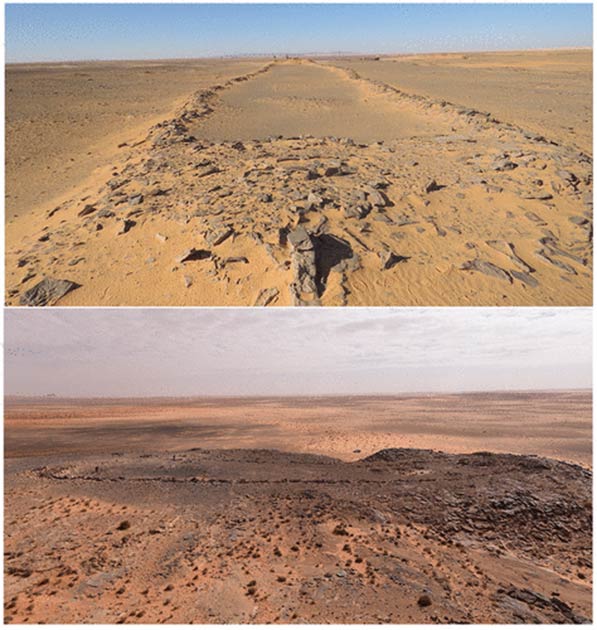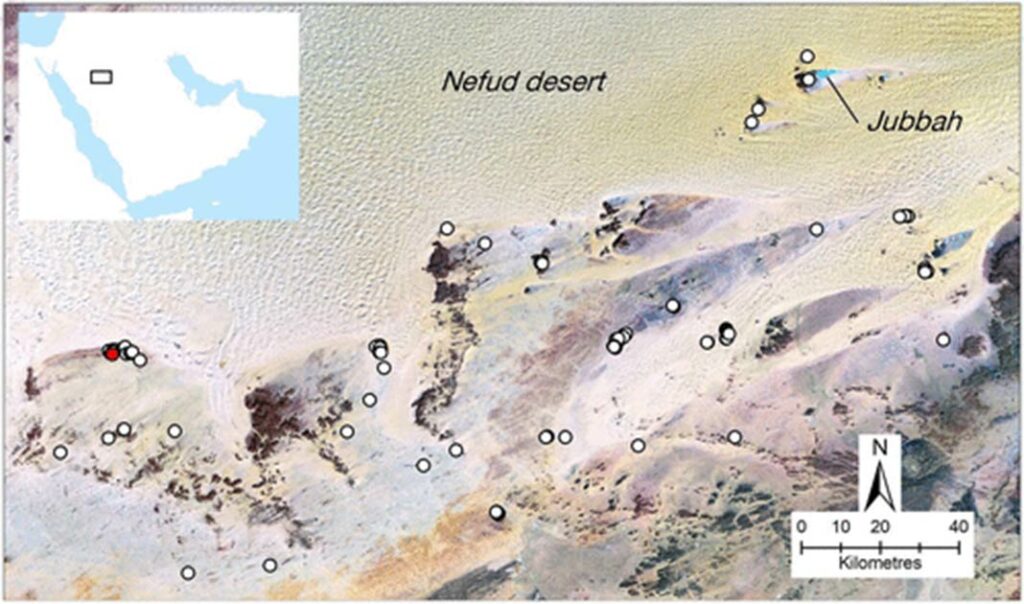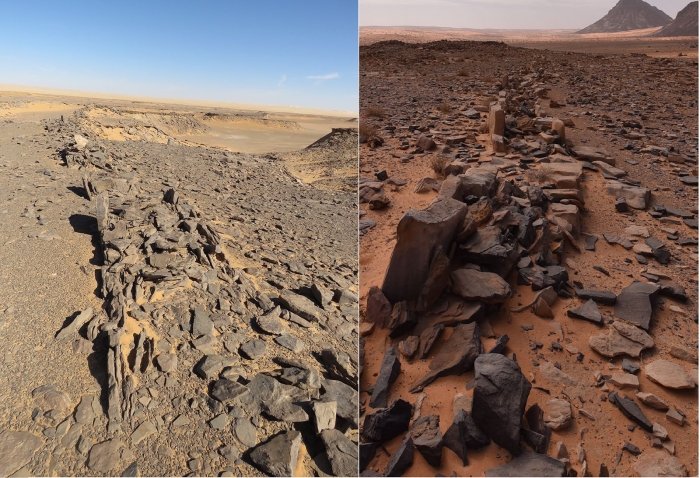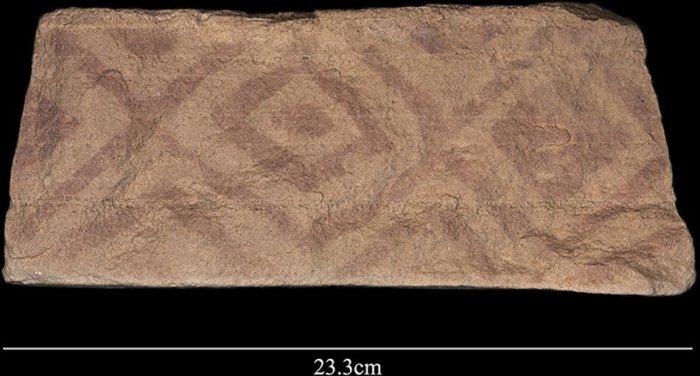
Hundreds of football-field-sized stone structures have been identified by archaeologists in Saudia Arabia, some dating back as far as 5000 B.C. During that time, the harsh and arid Arabian peninsula that we know today was much wetter. As such, these fascinating rectangular structures might have served to mark territory for herdsmen or for ritualistic purposes.
The stone structures are known as “mustatils”, from the Arabic word for “rectangle”. Hundreds of mustatils have been found so far across northwest Arabia, including on the slope of a volcano, representing some of the oldest monumental stone structures.
Thousands of years before Giza’s pyramids

Writing in the journal The Holocene, researchers at the Max Planck Institute in Germany and King’s College London described the “character and chronology” of these mysterious structures, which were first identified in 2016 thanks to satellite imagery.
The report includes 104 ‘mustatil’ stone structures located in the southern margins of the Nefud Desert in northern Arabia, and describes their landscape positions, architecture, and associated material culture and faunal remains.

A mustatil basically looks like a field surrounded by a low stone wall and a gate. They range in size from 15 meters in length to as much as 615 meters in length. Adding to the mystery of these ancient structures are platforms positioned at the end of each rectangle. One such platform had a painting with geometric designs, whose pattern has never been seen before in other rock arts. During their heyday, it’s quite possible that the mustatils were extensively painted and must have looked spectacular.

The researchers also performed the first radiocarbon dating of a mustatil, finding the oldest was constructed about 7,000 years ago.
“The structure we have dated is the oldest large-scale stone structure known from the Arabian Peninsula. The mustatil phenomenon represents a remarkable development of monumental architecture, as hundreds of these structures were built in northwest Arabia. This ‘monumental landscape’ represents one of the earliest large-scale forms of monumental stone structure construction anywhere in the world,” the authors wrote.
There were very few artifacts found at the sites, suggesting that the structures weren’t used year-round. Some scholars believe that the mustatils served a ritualistic purpose, but it could be that these stone monuments served to mark territory.
About 7,000 years ago, the Arabian peninsula was quite lush and experienced regular rainfall. During that time, Neolithic people were pastoralists, relying on herds of domesticated animals for sustenance.
Although the climate was much more hospitable than it is today, Arabia would have experienced occasional droughts, leading to competition for grazing lands. The mustatils may have been a manifestation of increasing territoriality in the region, the authors wrote.
The so-called “Green Arabia” didn’t last long though. After the region dried up quickly, the rectangular stone structures stopped appearing in the archaeological record.
“The lack of obvious utilitarian functions for mustatils suggests a ritual interpretation. In fact, mustatils seemingly represent one of the earliest examples known anywhere of large-scale ritual behaviours encoded in the practice of monumental construction and use,” the researchers wrote in their paper.
“Our findings indicate that mustatils, and particularly their platforms, are significant archives of Arabian prehistory, and their future investigation and excavation is likely to be highly rewarding, leading to a better understanding of social and cultural developments.”


